As you commence your wedding planning journey, one of the preliminary tasks involves sorting and sending out the invitations, with the critical decision of determining whose name appears first beckoning attention.
Does the bride’s name go first on wedding invitations? Typically, yes. The bride’s name has historically been placed first on wedding invitations, as the bride’s family was expected to host and bear the expenses of the celebrations.
However, contemporary norms provide couples with the latitude to approach this differently, offering flexibility and freedom in decision-making.
To navigate this, below are six fundamental rules to guide your pen as you craft those invitations, coupled with three additional etiquette tips to ensure seamless communication with your guests.
Before you proceed, it is important to acknowledge that the etiquette discussed below is particular to Western weddings. If you or your partner are from a different culture, these may not be applicable; for instance, some Eastern cultures prescribe that the groom’s name always goes first on wedding invitations.
Naming Etiquette on Wedding Invitations
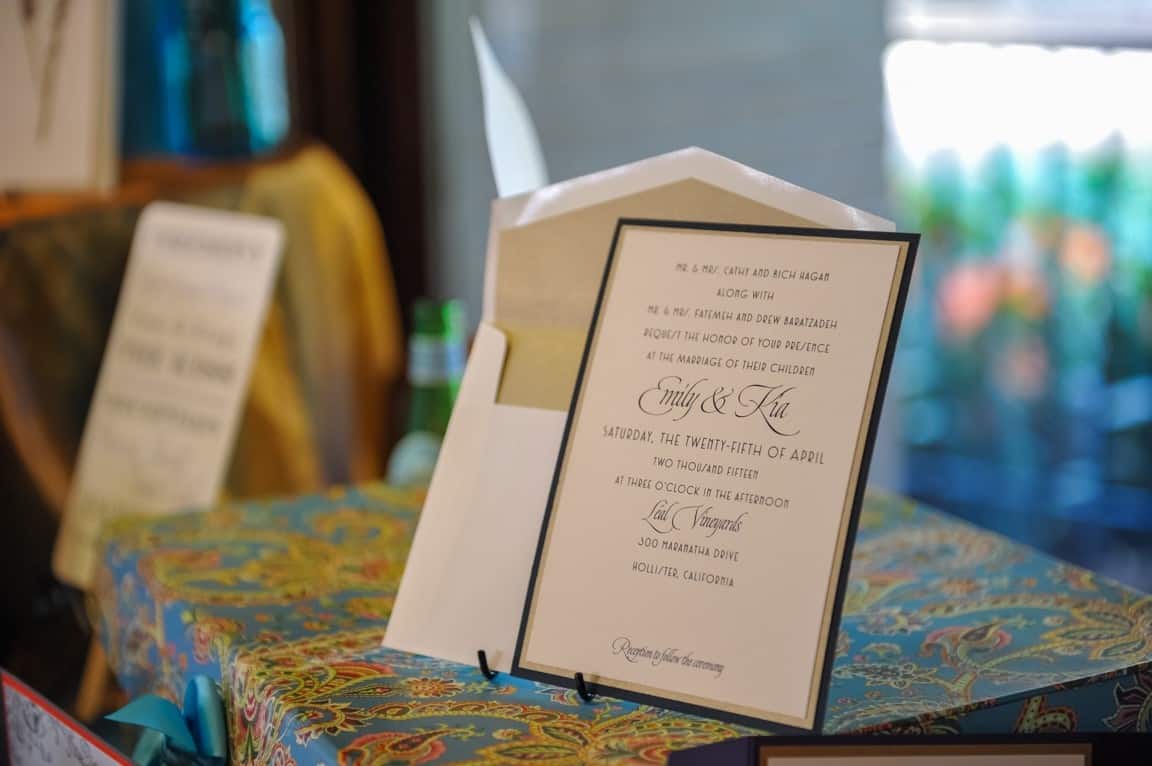
1. Bride’s Name Goes First
Traditionally, it is the bride whose name goes first on wedding invitations, followed by the groom’s name. There are a few reasons why this tradition has been followed throughout the years. Firstly, this is guided by the mentality of “ladies first” in Western culture — such as holding the door open for a woman.
Historically, it has also been the bride’s family who hosts the event. Moreover, the bride’s family also contributes more to the overall wedding budget. Having the bride’s name appear first on the invitation is a show of courtesy on the groom’s family’s side.
2. Bride’s Surname Is Omitted
If a woman’s maiden name is Alexandra Rose Gladwell, the invitation typically only indicates “Alexandra Rose.” This is practiced if the bride’s parents are the hosts of the event, as their last name would already be mentioned in another part of the invitation.
3. Groom’s Full Name Is Used
As opposed to the bride, the groom’s full name is usually written on a wedding invitation; if his name is “Johnny Franz Forsyth,” it will appear as such unless the groom specifically requests something else.
However, the opposite is true if the groom’s parents are the ones hosting the event. Only his first and middle names are used, while the bride’s full name is indicated on the invitation.
4. Etiquette for Same-Sex Couples
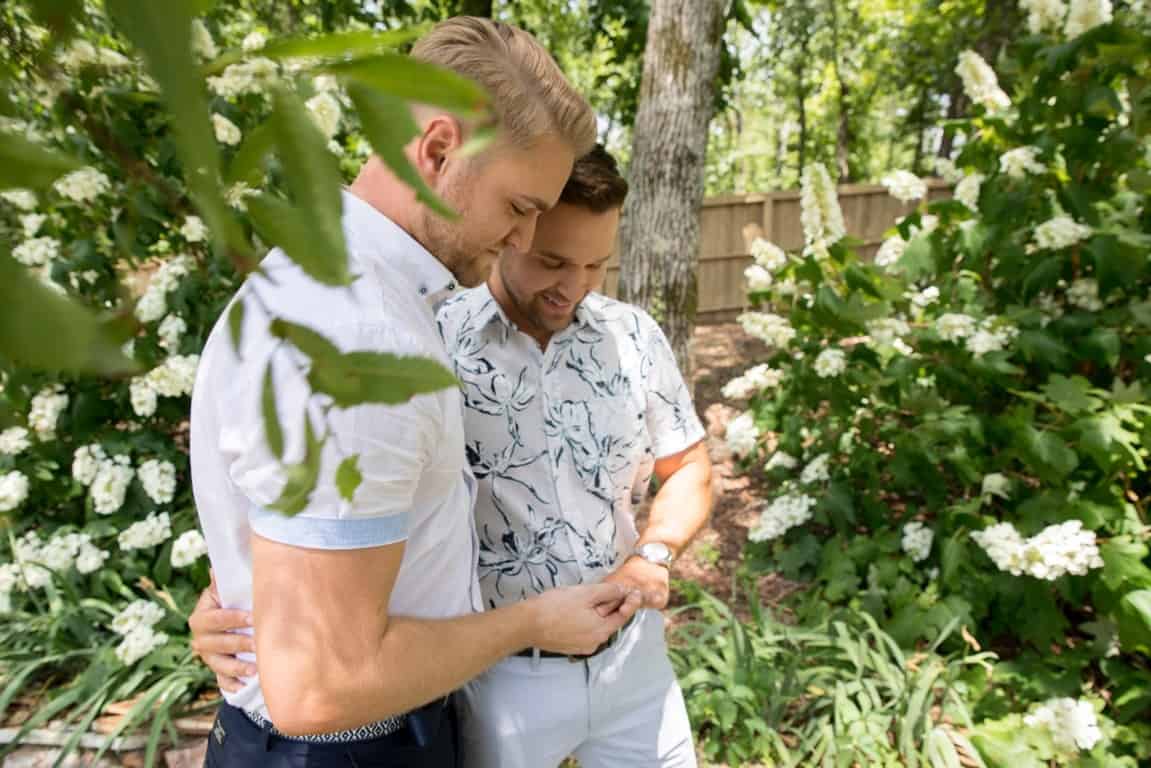
For same-sex couples, the rules above might not be applicable. Here are some things they can keep in mind when deciding whose name goes first on a wedding invitation:
- You are free to simply utilize alphabetical order.
- Which order of names sounds better when spoken out loud?
- How are you usually referred to as a couple? For example, is it Sophie and Craig, or Craig and Sophie?
- Which order of names would look the most aesthetically pleasing on the invitation?
However, it is worth noting that these tips are not only for same-sex couples. Heterosexual couples and gender-nonconforming couples who wish to modernize and personalize their wedding invitations can consider the ideas presented above as well.
5. Use Alphabetical Order for the Entourage
On another card in your wedding invitation, you will write the names of the members of the bridal entourage. This includes principal sponsors, secondary sponsors, members of the wedding party, and so on. It is best to arrange their names in alphabetical order, as this prevents any bias or favoritism from showing.
6. Writing “and” Between Two Names Means They Are Married
This may sound obvious, but you must be mindful of this implication if your parents are divorced and have already re-married. Instead of using “and,” you may want to stack their names instead to avoid the connotation. The exception to this stacking rule is the bride and groom’s names.
General Wedding Invitations Etiquette
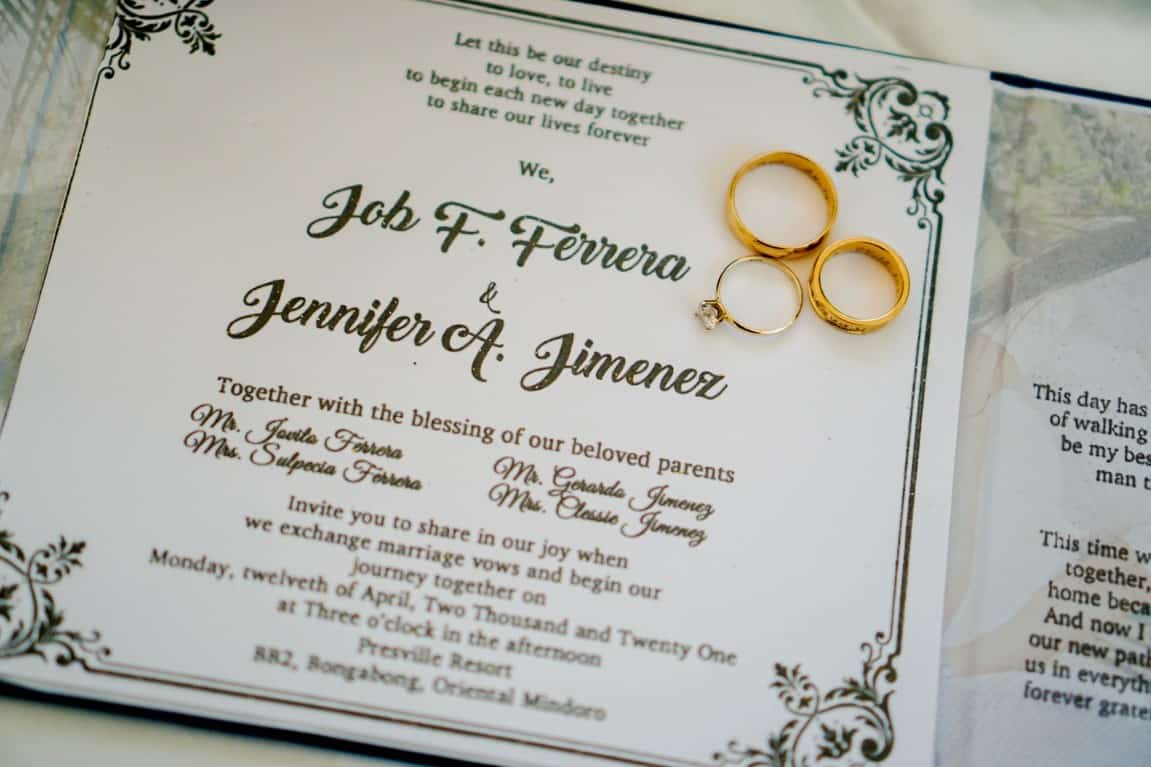
1. Dress Code
You have the option to include the dress code in the main invitation card under the reception line. This way is preferable, as your guests are sure to see the dress code. Another way you can inform your guests of the dress code is through an update on your wedding website, but some guests might miss that and show up in the wrong attire.
2. Rules for Writing Time
There are several rules for writing time in a wedding invitation:
- Time is always spelled out.
- Time is never capitalized.
- The word “o’clock” is only used if the time is on the hour.
- If the time is not on the hour, hyphenate it.
- Time is always followed by a marker, such as “in the morning,” “in the afternoon,” “in the evening,” and so forth.
3. Insert Cards
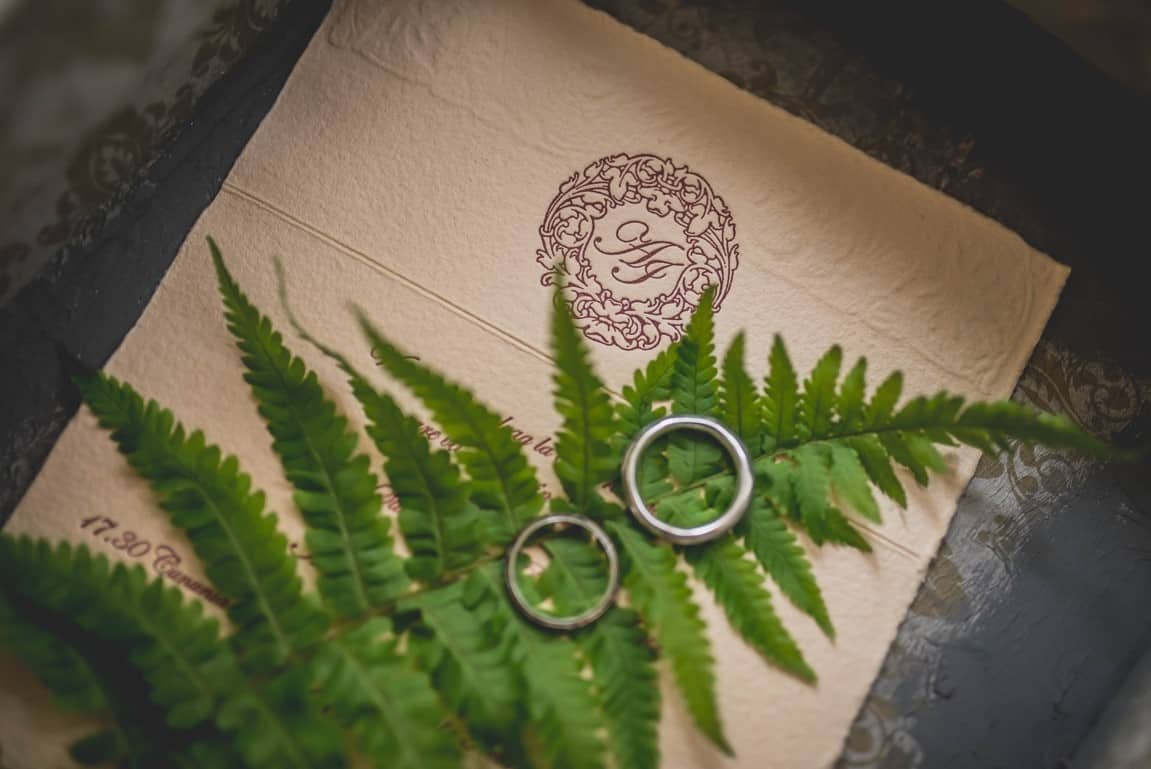
You can only fit so much information in a wedding invitation before it starts to look cluttered and disorganized. To avoid this, you can utilize insert cards. Additionally, insert cards are useful if you have other events in the itinerary and not all guests will be invited.
- Bridal entourage. Essentially, these are the people who will be walking down the aisle with the bride. As stated above, this includes the officiant, sponsors, groomsmen, bridesmaids, and so on.
- RSVP. An RSVP insert card is where guests can indicate their attendance, along with their dietary restrictions and meal of choice. Wording your RSVP strategically is essential if you want to limit the number of guests. This is also where you can indicate if your ceremony or reception is a no-kids event. Do not forget to include postage in the card; if certain guests forget to reply by the expected date, there are multiple ways you can remind them to do so.
- Invitations to other events. As mentioned above, you can insert extra invitation cards to inform specific guests that they are invited to more events. This includes a rehearsal dinner, welcome reception, day-after brunch, and so on.
- Travel information. This is essential for destination wedding invitations. This card gives your guests everything they need to know, including directions to the venue, accommodations available, maps, and so on.
- Registry information.
- Wedding website information.
Parts of a Wedding Invitation
The Hosts
The first line of the invitation indicates who are the hosts of the event. As mentioned above, they are typically the parents of the bride. However, the hosts can be any combination of parents, stepparents, the couple themselves, and other relatives. Below are examples of certain scenarios and combinations.
- Parents of the bride are hosting: and Mrs. Joseph Grier…
- Divorced parents who have not re-married: Joanna Miller and Mr. Erik Emerson…
- Divorced parents with a re-married mother: and Mrs. Marcus Chen // Mr. Reagan Church…
- Divorced parents with a re-married father: Alina Tennessen // Mr. and Mrs. Carson Garcia…
- Divorced parents, both re-married: and Mrs. Simon Summers // Mr. and Mrs. Thomas Alcott…
- Bride and groom: Casey Jane and Norman Reid…
- Bride, groom, and parents: June Neale and David Eriksson, together with their family…
If one of your parents has passed away, you can certainly pay homage to them on your wedding invitation. One way you can do this is to write the parents’ names after the names of the couple are introduced.
- Wendy Coleman, the daughter of Mr. Nathan Coleman and the late Gina Coleman
- Brad Crawford, the son of Ms. Anna Crawford and the late Mr. Malcolm Crawford
If you and your partner are hosting the event, feel free to not include a host line in the invitation.
In addition, you can opt not to name a host at all. The actual hosts may prefer not to be known, or the couple themselves prefer not to share that information. Ultimately, the couple has to make that decision.
The Request
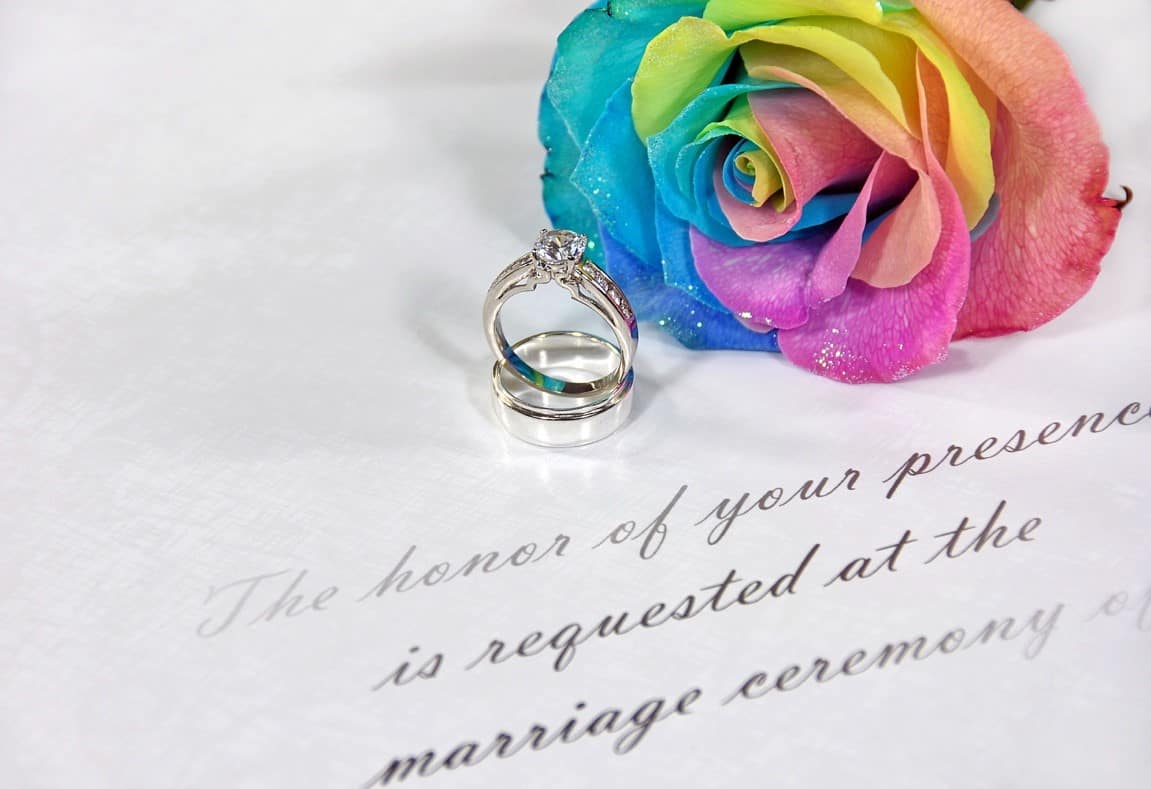
This is the verbal invitation to the event. The majority of couples, if not all, follow a template depending on how formal they want their wedding to be:
- Formal
- “… request the honor of your presence at the wedding of…”
- “The honor of your presence is requested at…”
- Casual
- “Please join us for the wedding of…”
- “We request the pleasure of your company to the wedding of…”
- “Invite you to celebrate the wedding of…”
The Names of the Couple
As mentioned above, it is commonly the bride whose name goes first on wedding invitations. However, different couples have different preferences; here are a few examples of wordings for the names of the couple:
- Justine Louise and Aldrin Joseph Enriquez
- Belle Grace and Dr. Ichiro Yamamoto
- Gerald Allan and Mark William Johnson
- Donald Garcia and Mx. Madeline O’Brien
- Leah Gonzalez, daughter of Mr. and Mrs. Drew Gonzalez, and Mario Ramirez, son of Mr. Danilo Ramirez and the late Melinda Ramirez
- Jeannette Walker and Mary Lou Anderson
Schedule of the Event
Write the time, date, and year of the wedding; be as specific as possible to avoid any confusion. As mentioned above, invitations for formal types of ceremonies typically have everything spelled out — do not write anything in numerals, even the year.
Venue of the Event
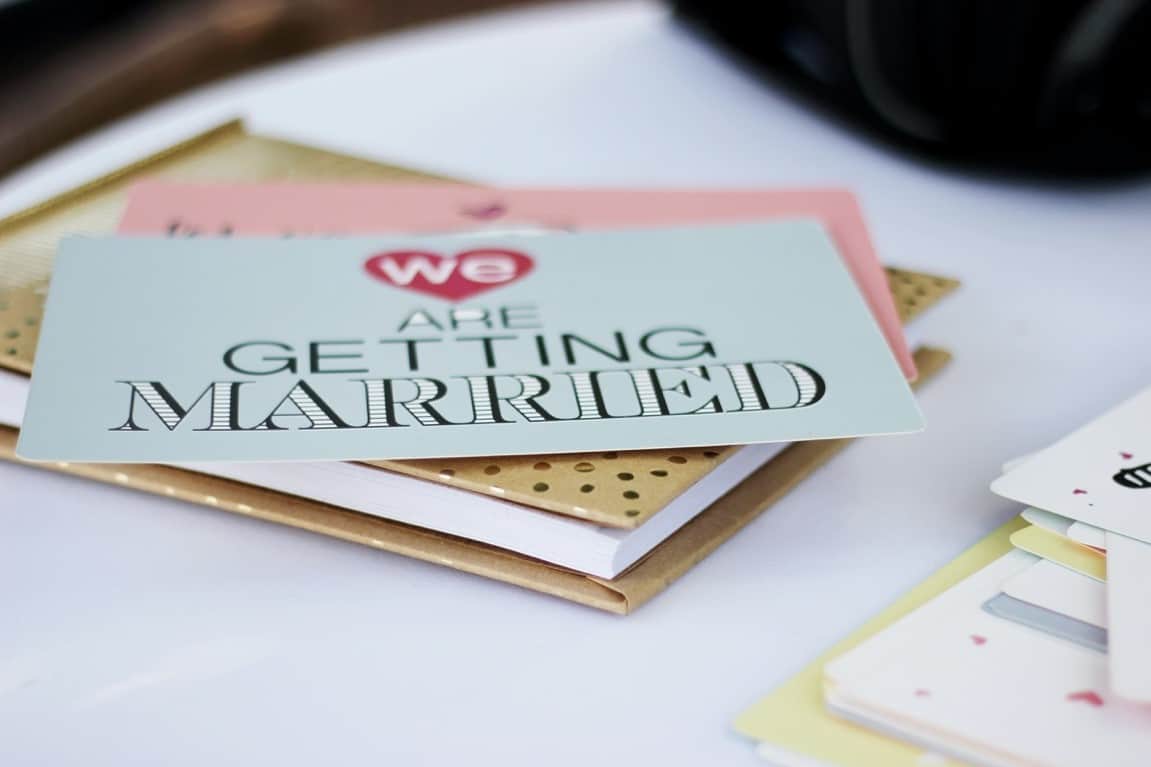
Let your guests know what the name of the venue is. In many cases, they can simply put this in a GPS, and they will instantly have directions.
However, it is still best to include the city, state, and address of the location. For one, the venue may have multiple branches in the country. This is also the best course of action if the venue is someone’s private property and not easily visible in a GPS.
For destination wedding invitations, more details about the venue, accommodation, and transportation are included in a separate card. This ensures that your guests know everything they need to know, thus avoiding getting lost in an unfamiliar area.
Reception Line
If the reception will be held in the same location as the wedding ceremony, you can simply indicate “Reception to follow,” “Dinner and cocktails to follow,” or something similar. A reception card will only be necessary if the venue and schedule are different.
Sample Wedding Invitations
1.
Jade Mary Adams
and
Shane Edward Vexman
August 16, 2023
At seven o’clock in the evening
Boston Public Library, Massachusetts
Reception to follow
3. Ms. Sheila Wright
and Mr. Lyman Green and Mrs. Julie Green
and Mr. and Mrs. Bryan Finnegan
Cordially invite you to the wedding of their children
Lexie Catherine
and
William Lee Finnegan
Sunday, May 7, 2023
Two o’clock in the afternoon
Winnspeak Chapel
1234 Newark Street
Albany, New York
4.
and Mr. and Mrs. Joseph Nguyen
Request the pleasure of your company at the marriage of their daughter
Anne Nguyen
and
Catherine Joanna Parker
September 6, 2023
Five-thirty in the afternoon
Rose Gardens Park
2050 Rainbow Street
Sacramento, California
Dinner and dancing to follow
Dress code: semi-formal attire
6. Clyde Cranson
and
Jimmy Yoo
Invite you to share in their love and joy
As they exchange their vows and rings
July 15th, 2023
At five o’clock in the afternoon
Stojanov Events Center
39 Samson Street
New Orleans, Louisiana
Reception to follow
Smart casual attire
7. Please join us for the wedding of
Maria Ong & Daniel Hutchinson
Saturday, June 17th, 2023
at eight o’clock in the evening
Forage Mansion
Boise, Idaho
Reception to follow
Final Thoughts
Distributing invitations several months before the wedding date allows your guests to think about their attendance and make the necessary adjustments. Talk to your partner and both your families regarding the wording of the wedding invitation. However, do not overthink it; at the end of the day, what matters is that you are happy with the invitations you will be sending.